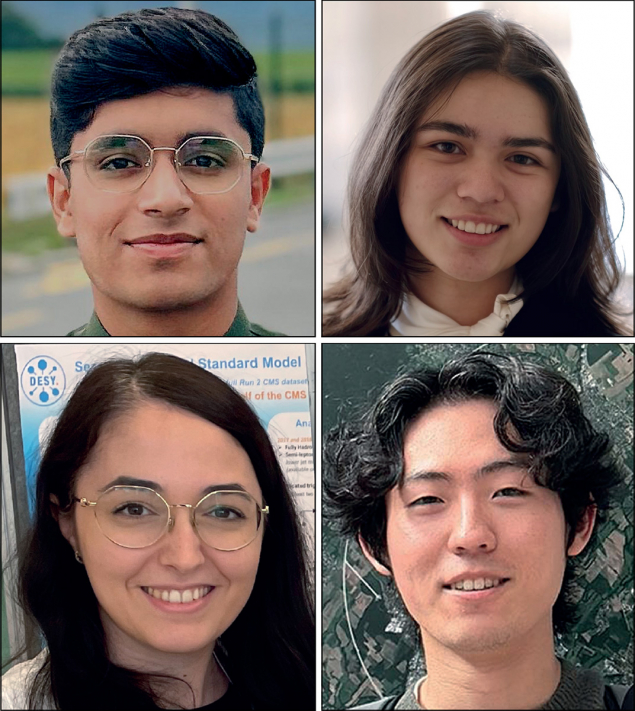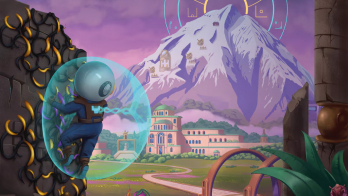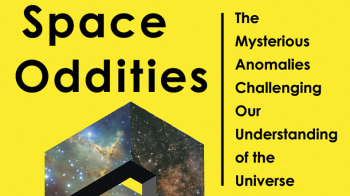To celebrate the 10th anniversary of Beamline for Schools, the Courier caught up with past winners whose lives were impacted by the competition.

High-school physics curricula don’t include much particle physics. The Beamline for Schools (BL4S) competition seeks to remedy this by offering high-school students the chance to turn CERN or DESY into their own laboratory. Since 2014, more than 20,000 students from 2750 teams in 108 countries have competed in BL4S, with 25 winning teams coming to the labs to perform experiments they planned from blackboard to beamline. Though, at 10 years old, the competition is still young, multiple career trajectories have already been influenced, with the impact radiating out into participants’ communities of origin.
For Hiroki Kozuki, a member of a winning team from Switzerland in 2020, learning the fundamentals of particle physics while constructing his team’s project proposal was what first sparked his interest in the subject.
“Our mentor gave us after-school classes on particle physics, fundamentals, quantum mechanics and special relativity,” says Kozuki. “I really felt as though there was so much more depth to physics. I still remember this one lecture where he taught us about the fundamental forces and quarks… It’s like he just pulled the tablecloth out from under my feet. I thought: nature is so much more beautiful when I see all these mechanisms underneath it that I didn’t know existed. That’s the moment where I got hooked on particle physics.” Kozuki will soon graduate from Imperial College London, and hopes to pursue a career in research.
Sabrina Giorgetti, from an Italian team, tells a similar story. “I can say confidently that the reason I chose physics for my bachelor’s, master’s and PhD was because of this experience.” One of the competition’s earliest winners from back in 2015, Giorgetti is now working on the CMS experiment for her PhD. One of her most memorable experiences from BL4S was getting to know the other winning team, who were from South Africa. This solidified her decision to pursue a career in academia.
“You really feel like you can reach out and collaborate with people all over the world, which is something I find truly amazing,” she says. “Now it’s even more international than it was nine years ago. I learnt at BL4S that if you’re interested in research at a place like CERN, it’s not only about physics. It may look like that from the outside, but it’s also engineering, IT and science communication – it’s a very broad world.”
The power of collaboration
As well as getting hands-on with the equipment, one of the primary aims of BL4S is to encourage students to collaborate in a way they wouldn’t in a typical high-school context. While physics experiments in school are usually conducted in pairs, BL4S allows students to work in larger teams, as is common in professional and research environments. The competition provides the chance to explore uncharted territory, rather than repeating timeworn experiments in school.
2023 winner Isabella Vesely from the US is now majoring in physics, electrical engineering and computer science at MIT. Alongside trying to fix their experiment prior to running it on the beamline, her most impactful memories involve collaborating with the other winning team from Pakistan. “We overcame so many challenges with collaboration,” explains Vesely. “They were from a completely different background to us, and it was very cool to talk to them about the experiment, our shared interest in physics and get to know each other personally. I’m still in touch with them now.”
One fellow 2023 winner is just down the road at Harvard. Zohaib Abbas, a member of the winning Pakistan team that year, is now majoring in physics. “In Pakistan, there weren’t any physical laboratories, so nothing was hands-on and all the physics was theoretical,” he says, recalling his shock at the US team’s technical skills, which included 3D printing and coding. After his education, Abbas wants to bring some of this knowledge back to Pakistan in the hopes of growing the physics community in his hometown. “After I got into BL4S, there have been hundreds of people in Pakistan who have been reaching out to me because they didn’t know about this opportunity. I think that BL4S is doing a really great job at exposing people to particle physics.”
All of the students recalled the significant challenge of ensuring the functionality of their instruments across one of CERN’s or DESY’s beamlines. While the project seemed a daunting task at first, the participants enjoyed following the process from start to finish, from the initial idea through to the data collection and analysis.
“It was really exciting to see the whole process in such a short timescale,” said Vesely. “It’s pretty complicated seeing all the work that’s already been done at these experiments, so it’s really cool to contribute a small piece of data and integrate that with everything else.”
Kozuki concurs. Though only he went on to study physics, with teammates branching off into subjects ranging from mathematics to law and medicine, they still plan to get together and take another crack at the data they compiled in 2020. “We want to take another look and see if we find anything we didn’t see before. These projects go on far beyond those two weeks, and the team that you worked with are forever connected.”
For Kozuki, it’s all about collaboration. “I want to be in a field where everyone shares this fundamental desire to crack open some mysteries about the universe. I think that this incremental contribution to science is a very noble motivation. It’s one I really felt when working at CERN. Everyone is genuinely so excited to do their work, and it’s such an encouraging environment. I learnt so much about particle physics, the accelerators and the detectors, but I think those are somewhat secondary compared to the interpersonal connections I developed at BL4S. These are the sorts of international collaborations that accelerate science, and it’s something I want to be a part of.”







